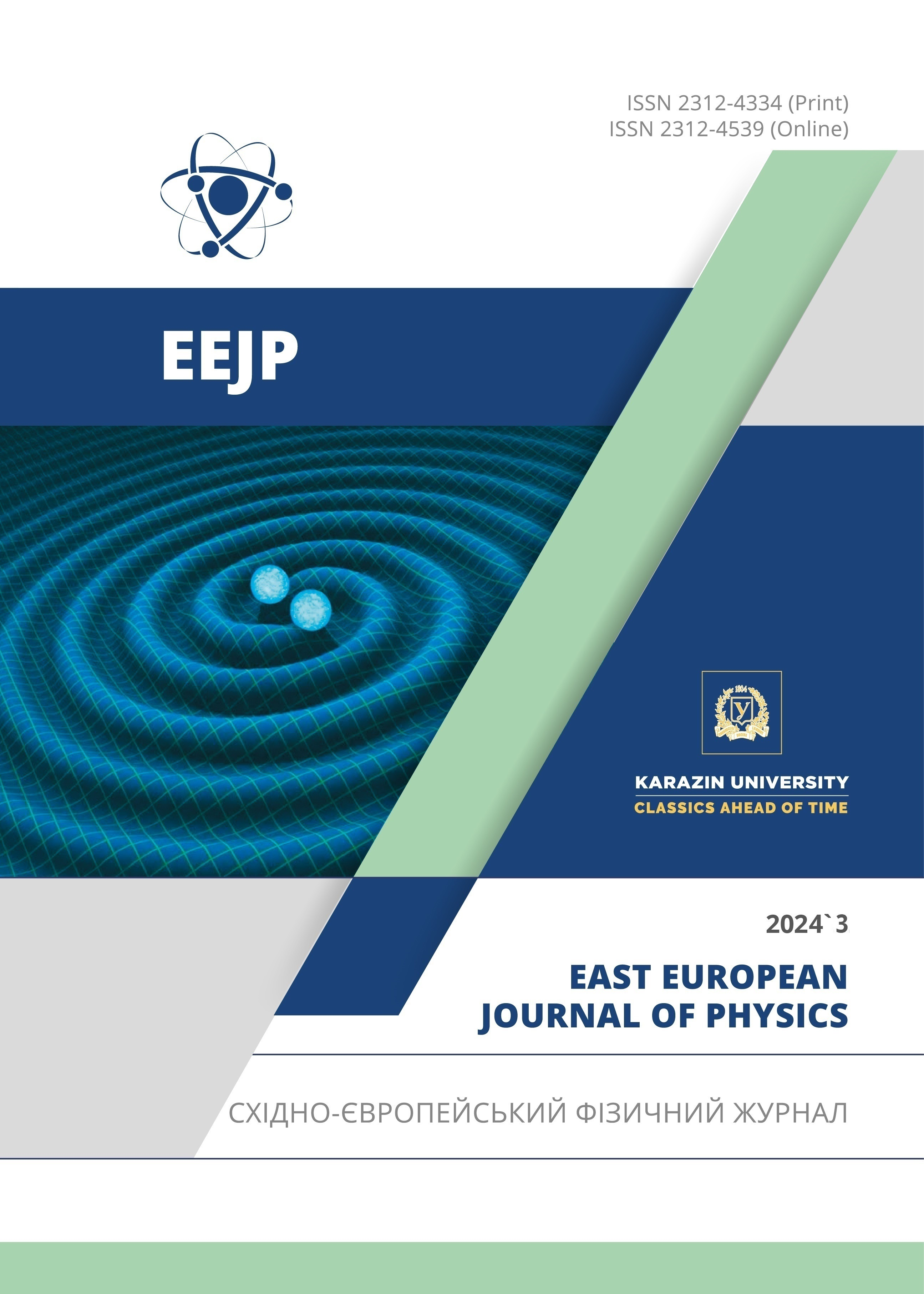An Optimized Ultrasonic Spray Pyrolysis Device for The Production of Metal Oxide Films and Their Morfology
Abstract
In this work, we developed an optimized ultrasonic spray pyrolysis device for obtaining metal oxide films. The key benefit of this facility lies in its cost-effectiveness and its ability to consistently coat extensive surfaces without sacrificing the integrity of the semi-conductive films, thus streamlining the manufacturing process of semiconductor films. The resulting films exhibit the following attributes: the thickness of the deposited layer is approximately 400 nm, while the diameters of ZnO1-xSx nanocrystals range from 50 to 200 nm, oriented perpendicular to the crystallographic orientation (111). In the production of nanorods, the average height is estimated to be approximately 30-50 nm, with a density of 2.9×10¹¹ cm⁻² being indicated.
Downloads
References
S. Nandi, S. Kumar, and A. Misra, “Zinc oxide heterostructures: advances in devices from self-powered photodetectors to self-charging supercapacitors,” Mater. Adv. 2, 6768-6799 (2021). https://doi.org/10.1039/D1MA00670C
V. Karpyna at. al., “Zinc oxide – analogue of GaN with new perspective possibilities,” Cryst. Res. Technol. 39(11), 980 992 (2004). https://doi.org/10.1002/crat.200310283
P. Ščajev, and D. Gogova, “Long-lived excitons in thermally annealed hydrothermal ZnO,” Heliyon, 10(4), e26049 (2024). https://doi.org/10.1016/j.heliyon.2024.e26049
I. Ayoub, et al., “Advances in ZnO: Manipulation of defects for enhancing their technological potentials,” Nanotechnology Reviews, 11(1), 575-619 (2022). https://doi.org/10.1515/ntrev-2022-0035
Sh.U. Yuldashev, R.A. Nusretov, I.V. Khvan, V.Sh. Yalishev, and T.W. Kang, “White light emission from ZnO/Zn0.9Mg0.1O heterostrustures grown on Si substrates,” Jаpаn. Appl. Phys. 47(17), 133-135 (2008). https://doi.org/10.1143/JJAP.47.133
S. Zaynabidinov, Sh. Yuldashev, A. Boboev, and N. Yunusaliyev, “X-ray diffraction and electron microscopic studies of the ZnO(S) metal oxide films obtained by the ultrasonic spray pyrolysis method,” Herald of the Bauman Moscow State Technical University, Series Natural Sciences, 1(112), 78-92 (2024). https://doi.org/10.18698/1812-3368-2024-1-78-92
J.M. Bian, X.M. Li, C.Y. Zhang, W.D. Yu, and X.D. Gao, “p-type ZnO films by monodoping of nitrogen and ZnO-based p–n homojunctions,” Appl. Phys. Lett, 85, 4070-4072 (2004). https://doi.org/10.1063/1.1808229
Y. Ryu, et al., “Synthesis of p-type ZnO films,” Journal of Crystal Growth, 216(1), 330-334 (200). http://dx.doi.org/10.1016/S0022-0248(00)00437-1
K. Salima, and W. Azzaoui, “Physical properties of spray pyrolysed ZnO thin films obtained from nitrate, acetate and chloride precursors: Comparative study for Solar Cell Applications,” Revista Mexicana de Fisica, 69, 031002 (2023). https://doi.org/10.31349/RevMexFis.69.031002
R. Kumar, M. Sekhar, Raghvendra, R. Laha, and S. Pandey, “Comparative studies of ZnO thin films grown by electron beam evaporation, pulsed laser and RF sputtering technique for optoelectronics applications,” Applied Physics, 126, 859 (2020). https://doi.org/10.1007/s00339-020-04046-8
S.Z. Zaynabidinov, A.Y. Boboev, and N.Y. Yunusaliyev, “Effect of γ-irradiation on structure and electrophysical properties of S-doped Zno films,” East European Journal of Physics, (2), 321-326 (2024). https://doi.org/10.26565/2312-4334-2024-2-37.
E. Ahmed, M. Samy, and L. Saad “Highly Conductive N-type Aluminum Dopped Zinc Oxide for CZTS Kieserite Solar Cell,” Egypt. J. Chem. 67(4), 309-313 (2024). https://doi.org/10.21608/ejchem.2023.241700.8724
Copyright (c) 2024 Sirajidin S. Zainabidinov, Akramjon Y. Boboev, Nuritdin Y. Yunusaliyev, Jakhongir N. Usmonov

This work is licensed under a Creative Commons Attribution 4.0 International License.
Authors who publish with this journal agree to the following terms:
- Authors retain copyright and grant the journal right of first publication with the work simultaneously licensed under a Creative Commons Attribution License that allows others to share the work with an acknowledgment of the work's authorship and initial publication in this journal.
- Authors are able to enter into separate, additional contractual arrangements for the non-exclusive distribution of the journal's published version of the work (e.g., post it to an institutional repository or publish it in a book), with an acknowledgment of its initial publication in this journal.
- Authors are permitted and encouraged to post their work online (e.g., in institutional repositories or on their website) prior to and during the submission process, as it can lead to productive exchanges, as well as earlier and greater citation of published work (See The Effect of Open Access).








